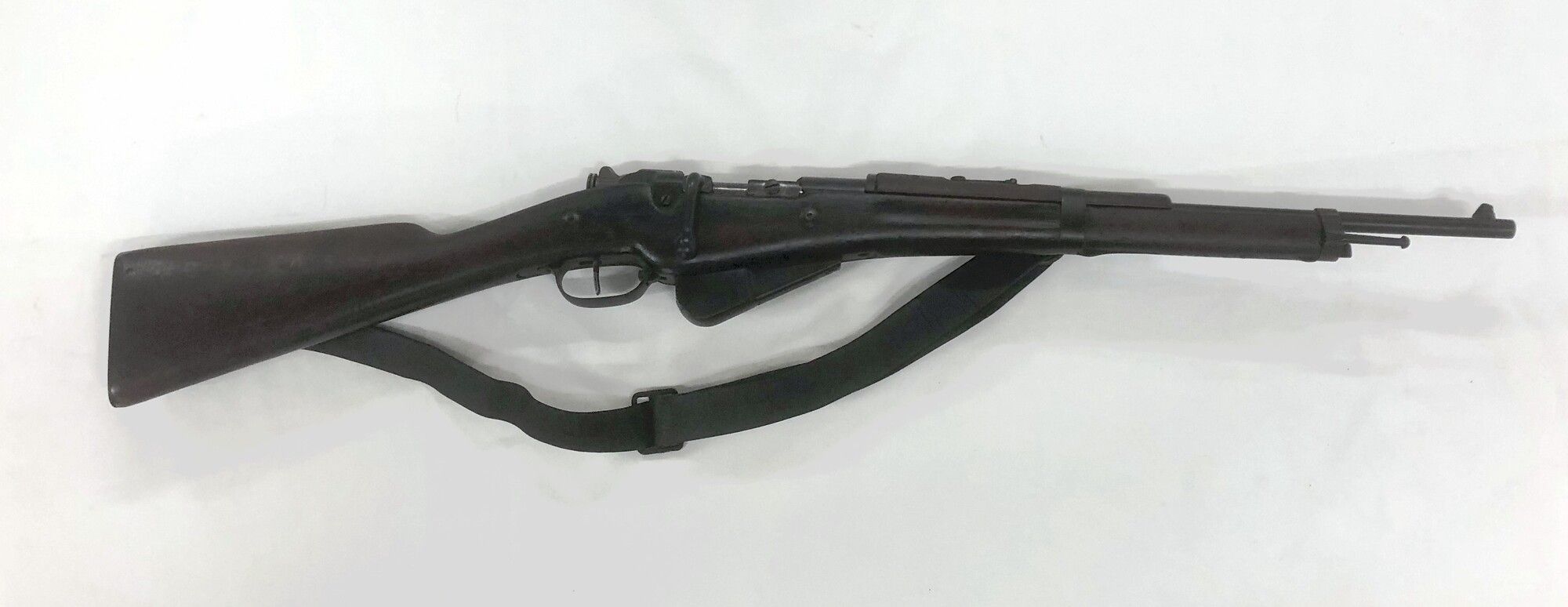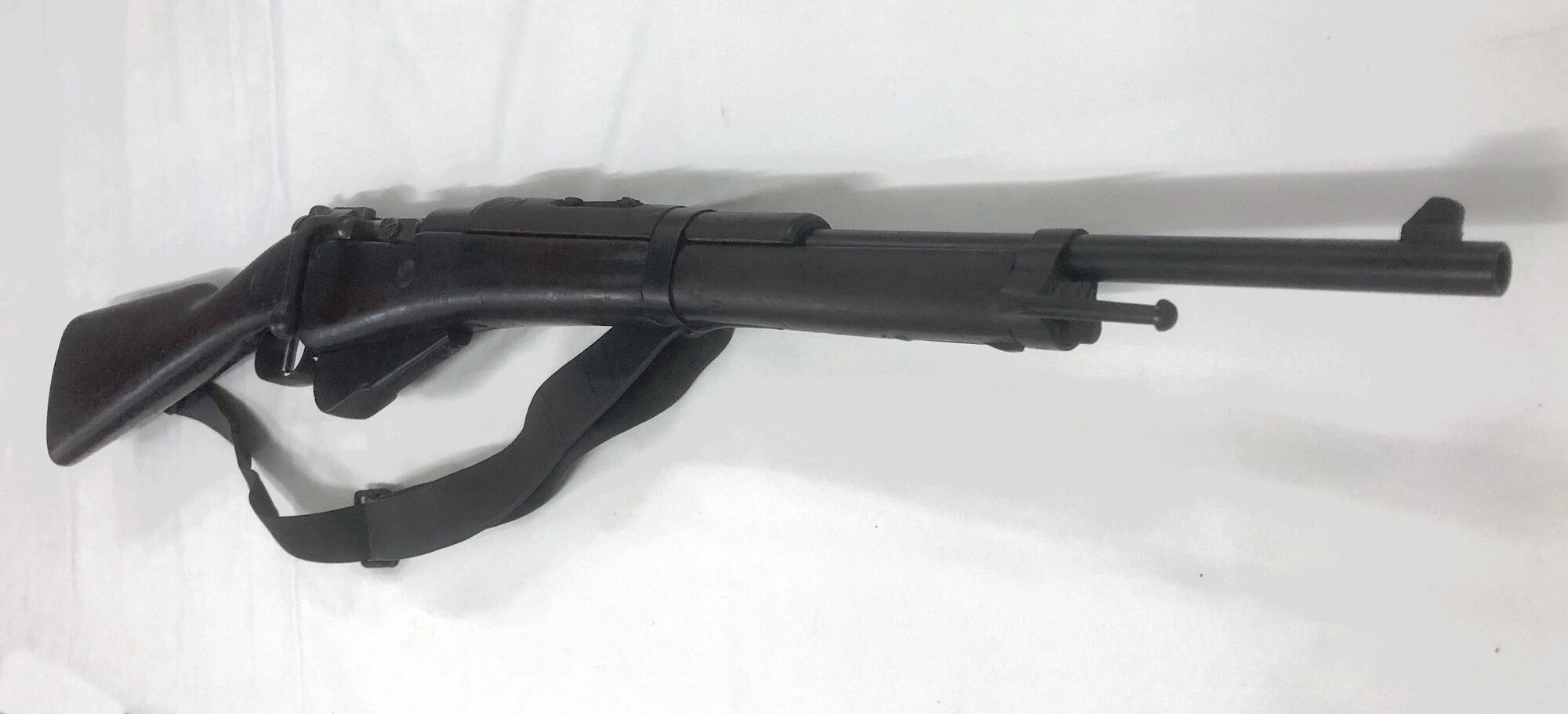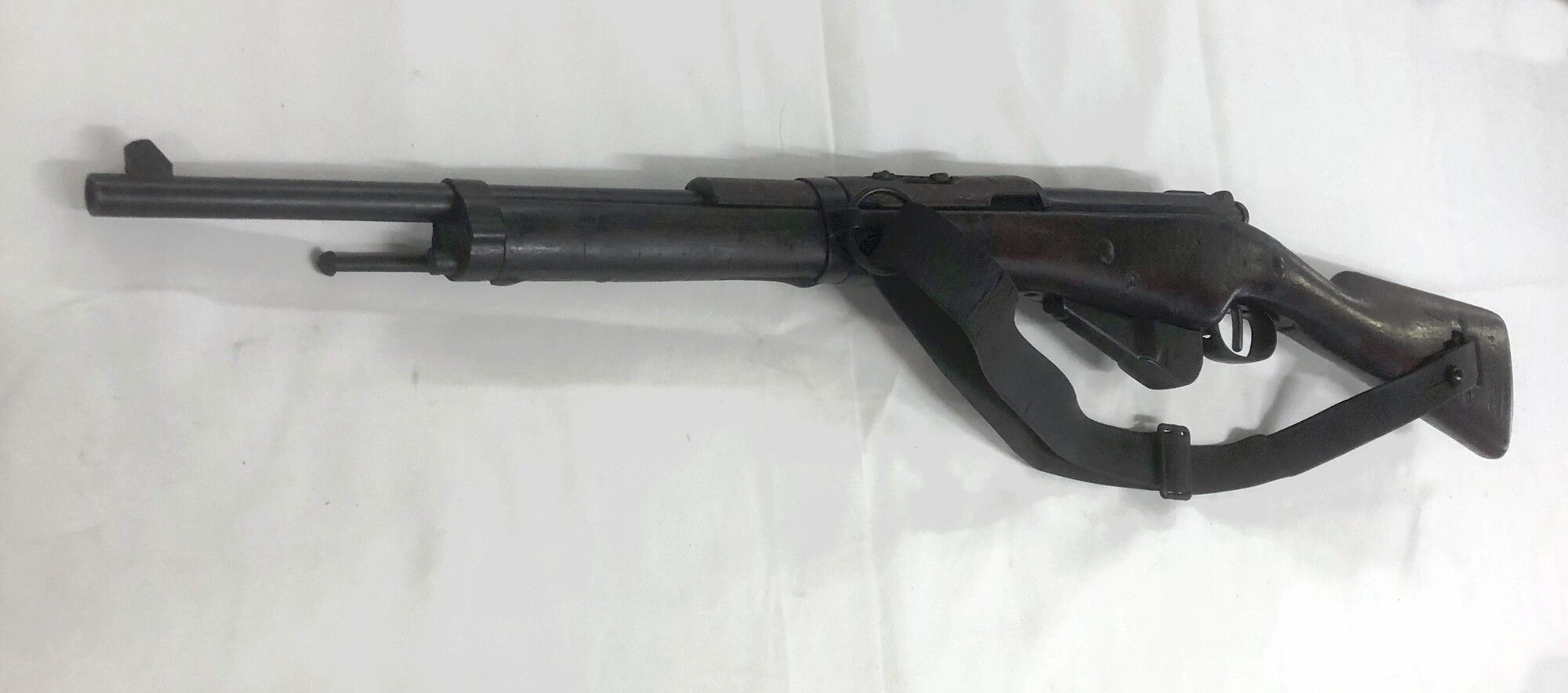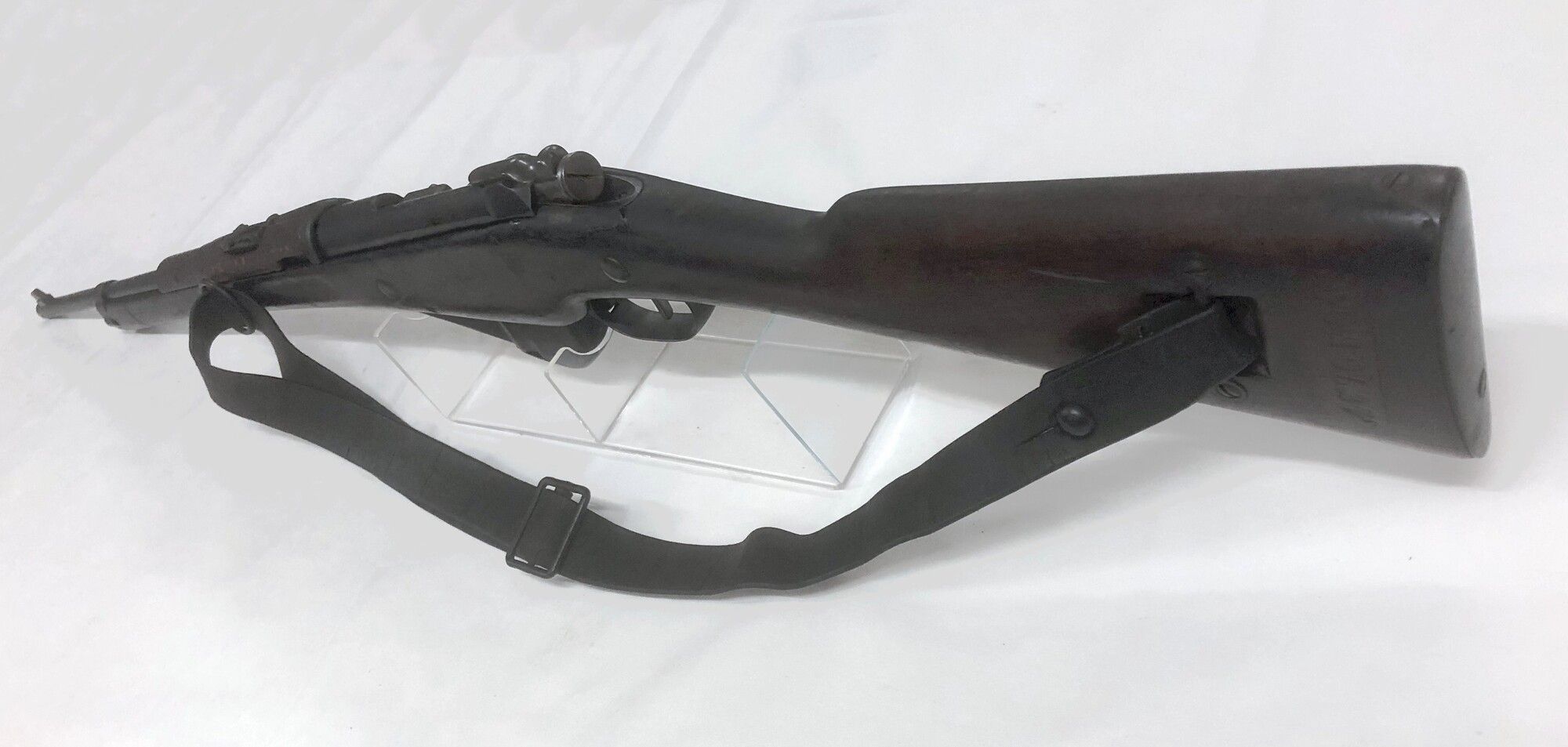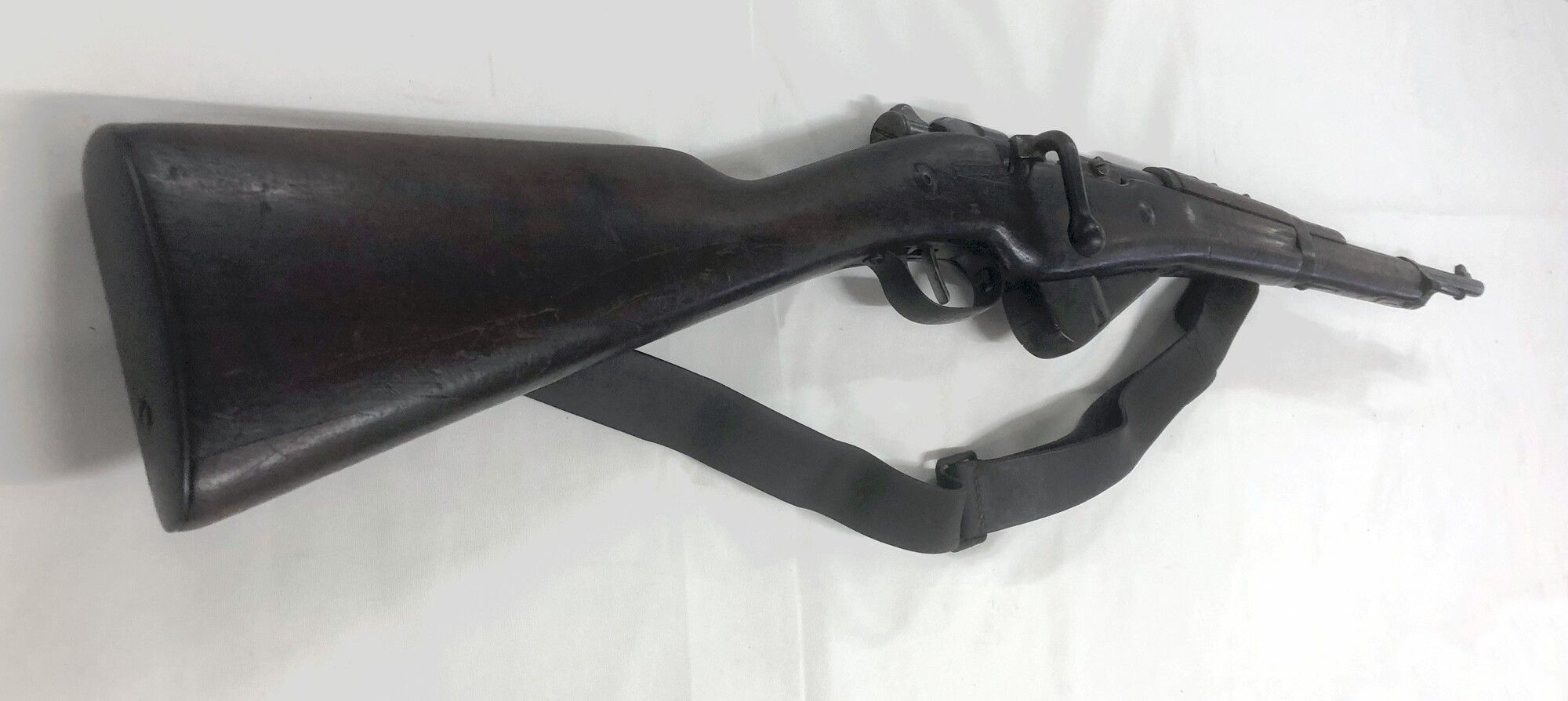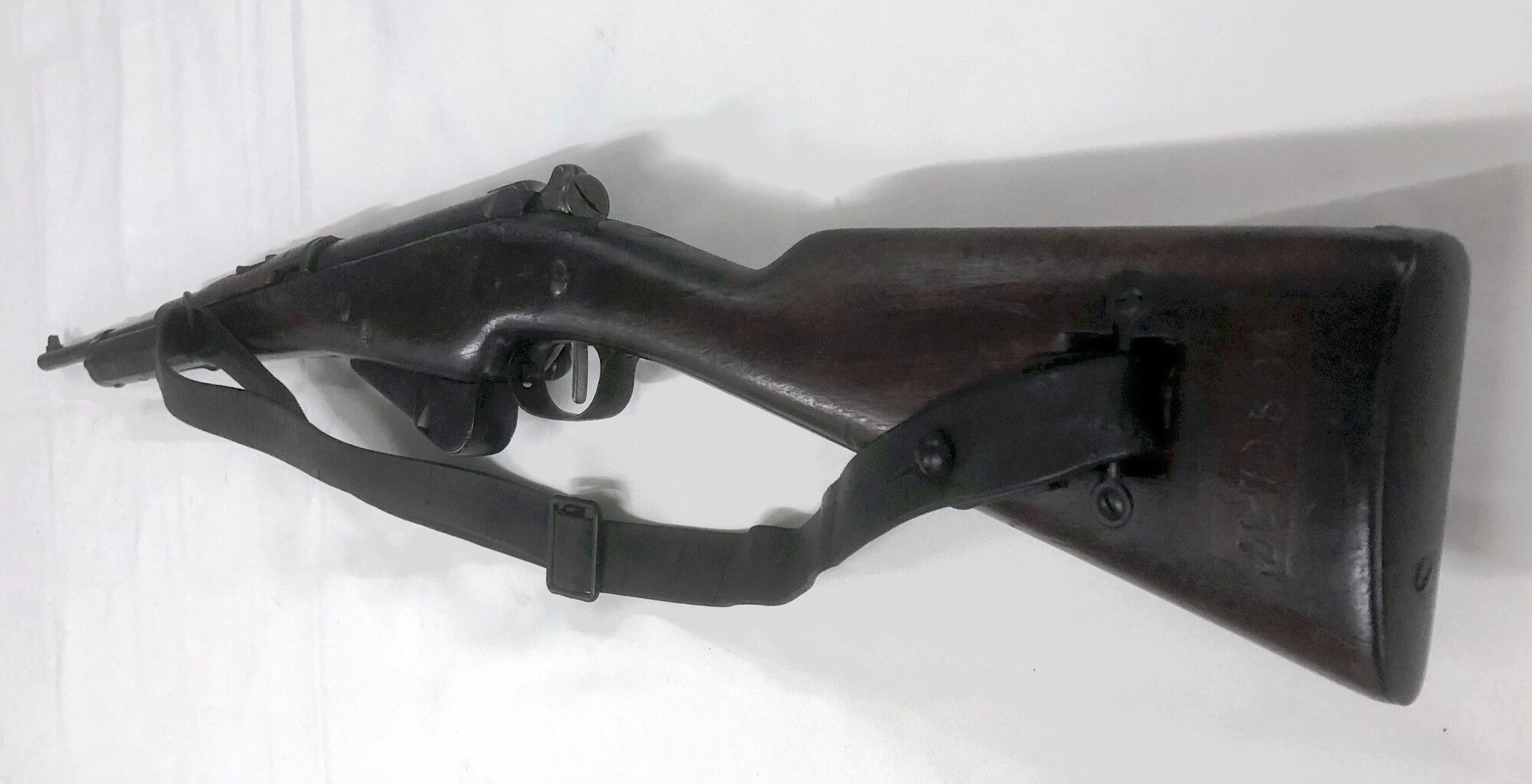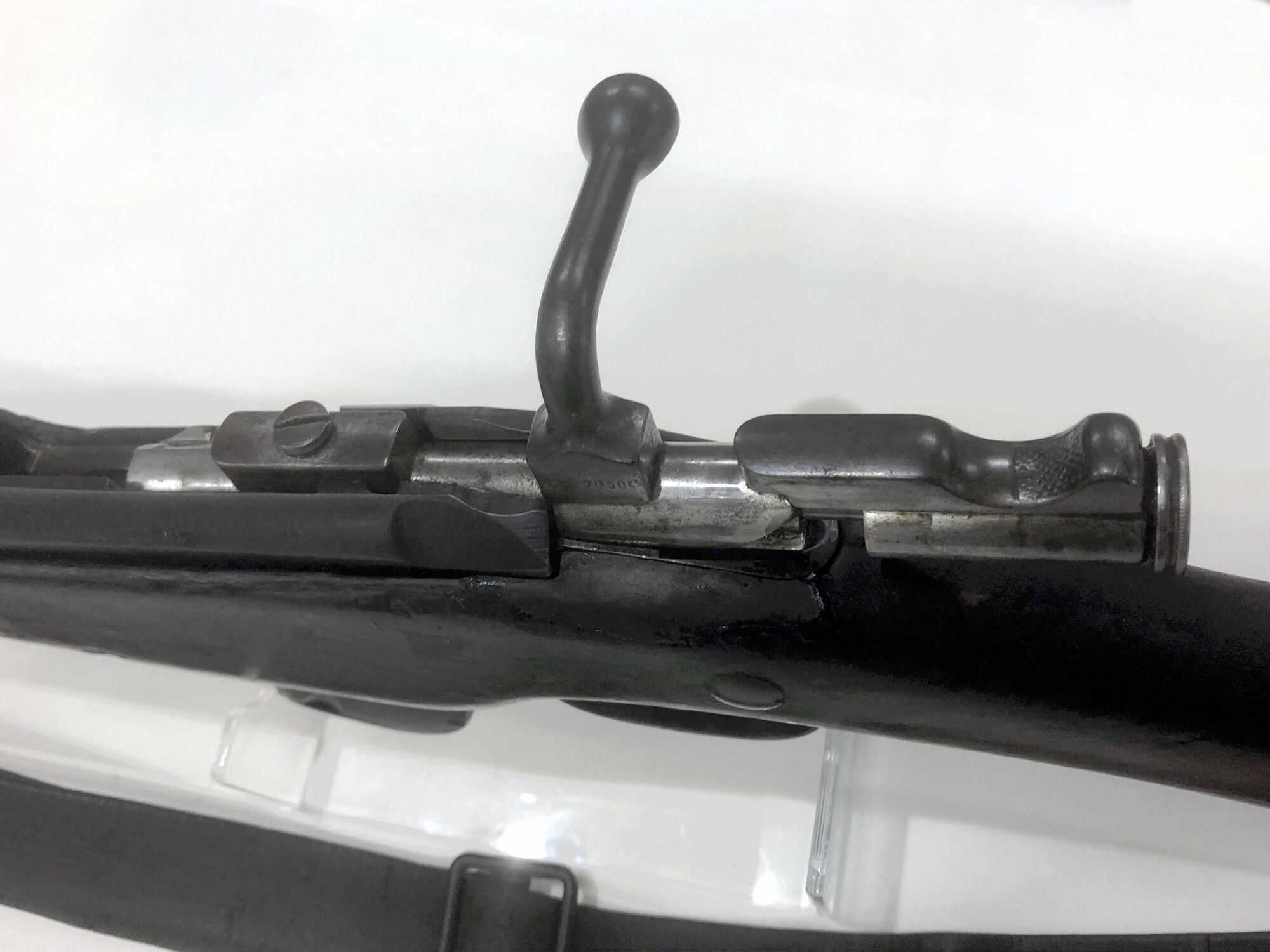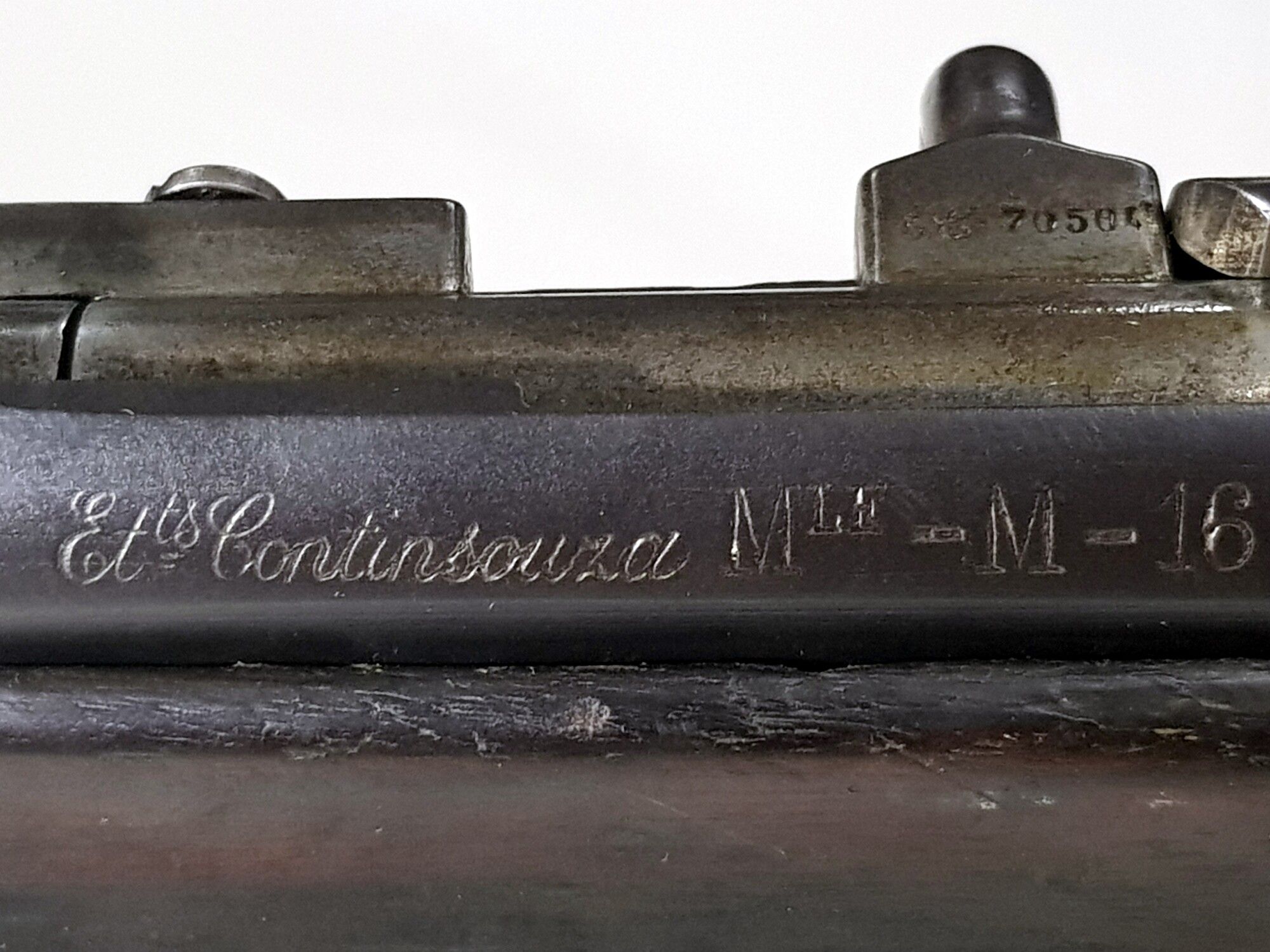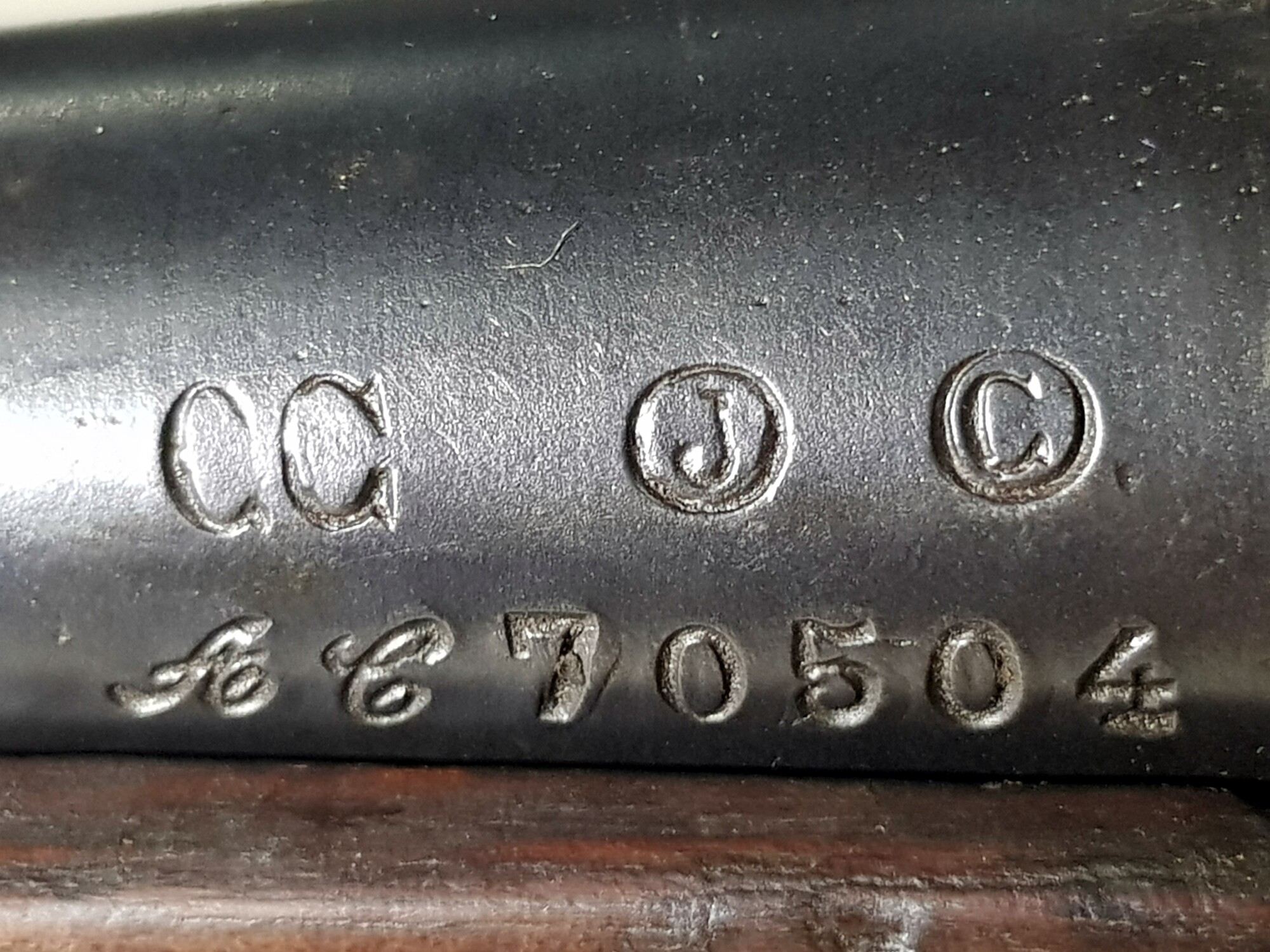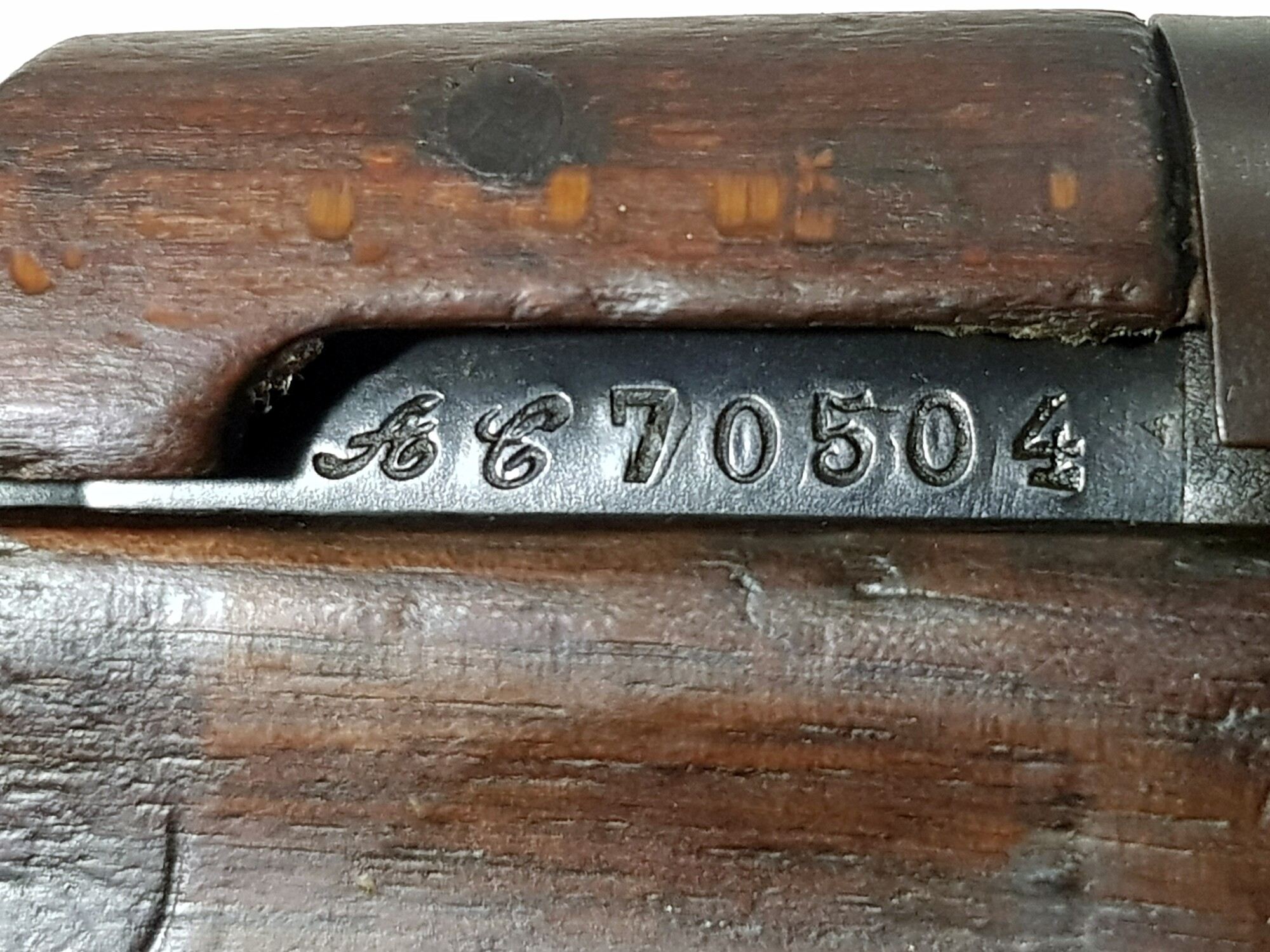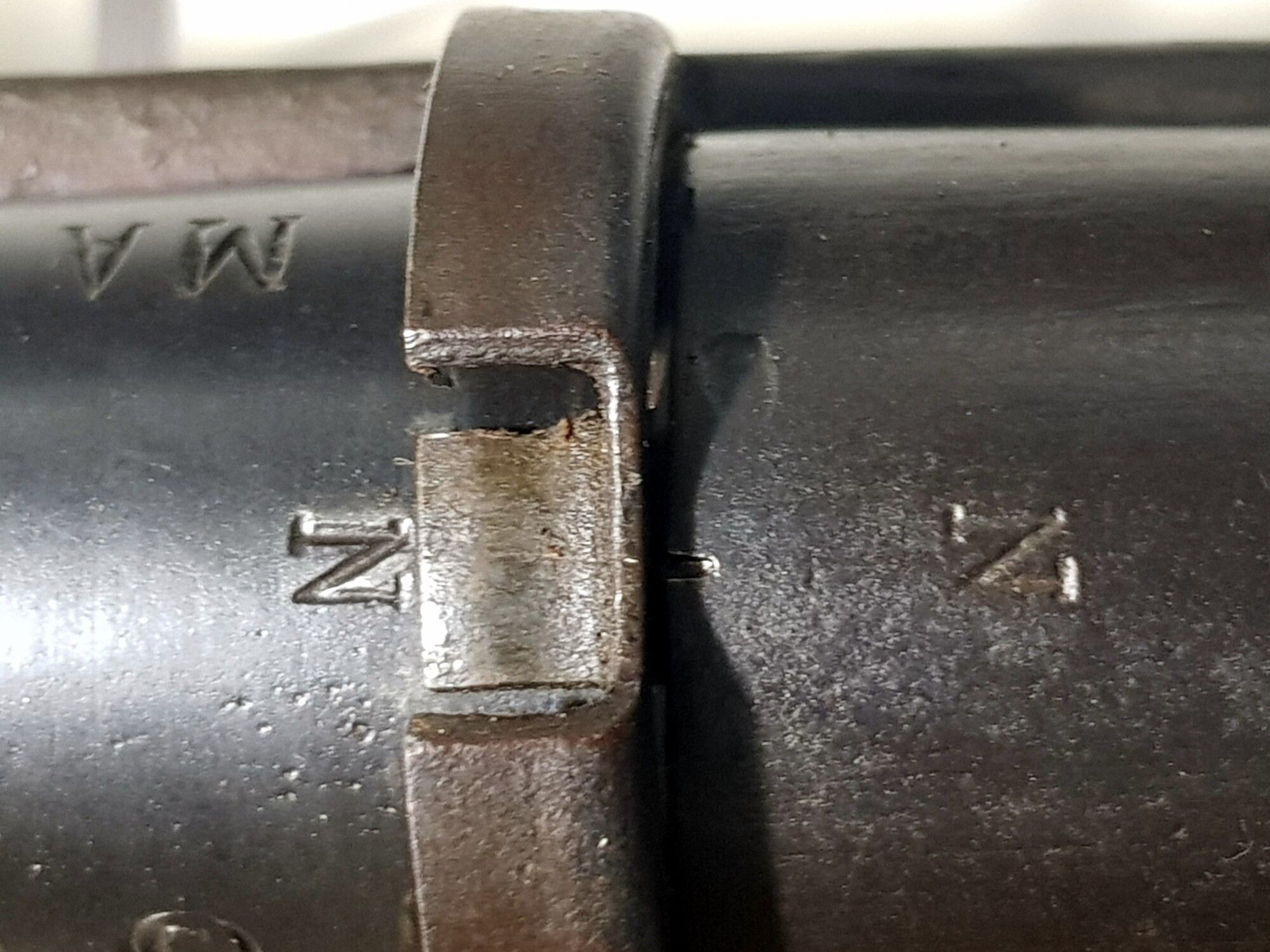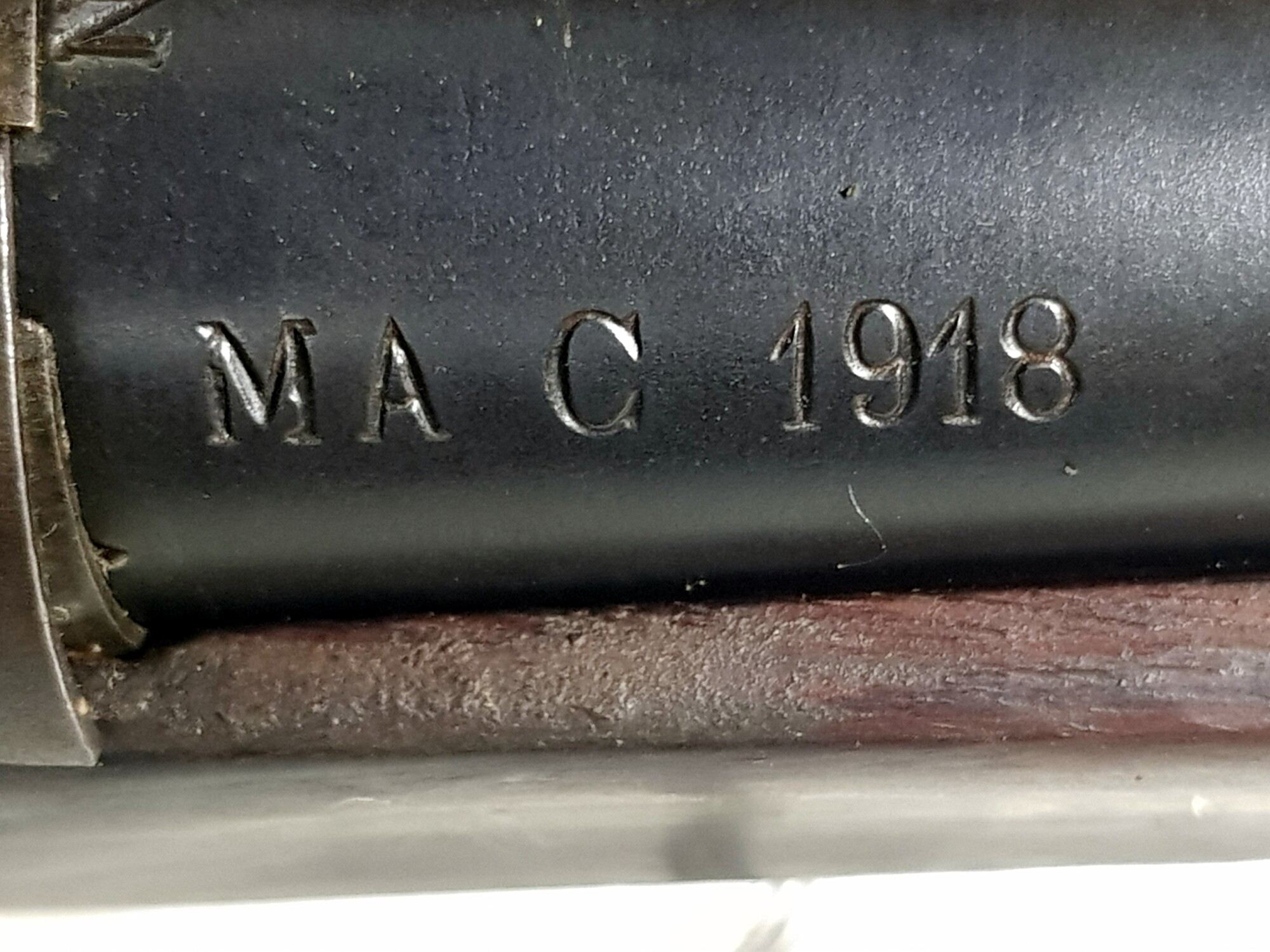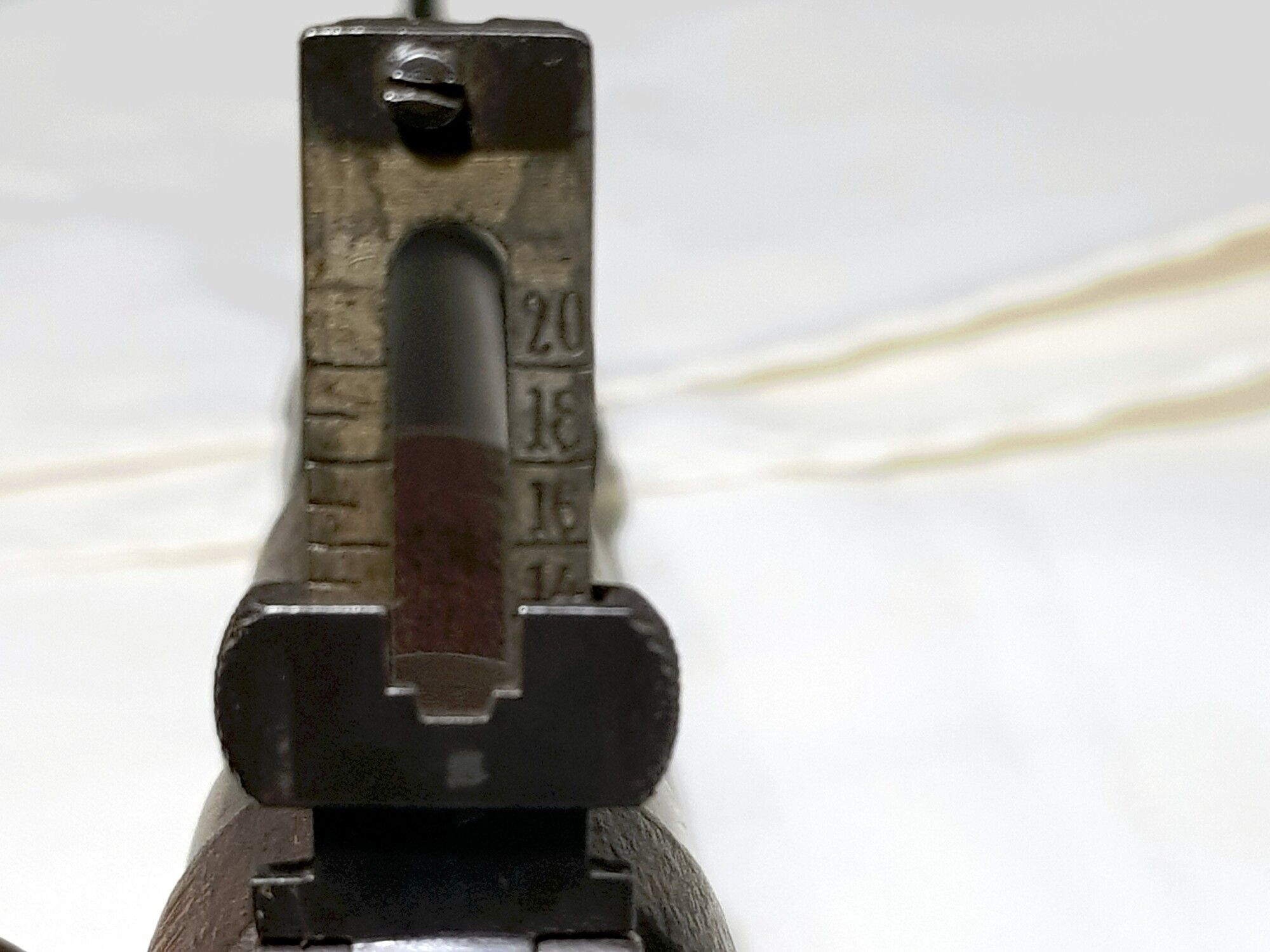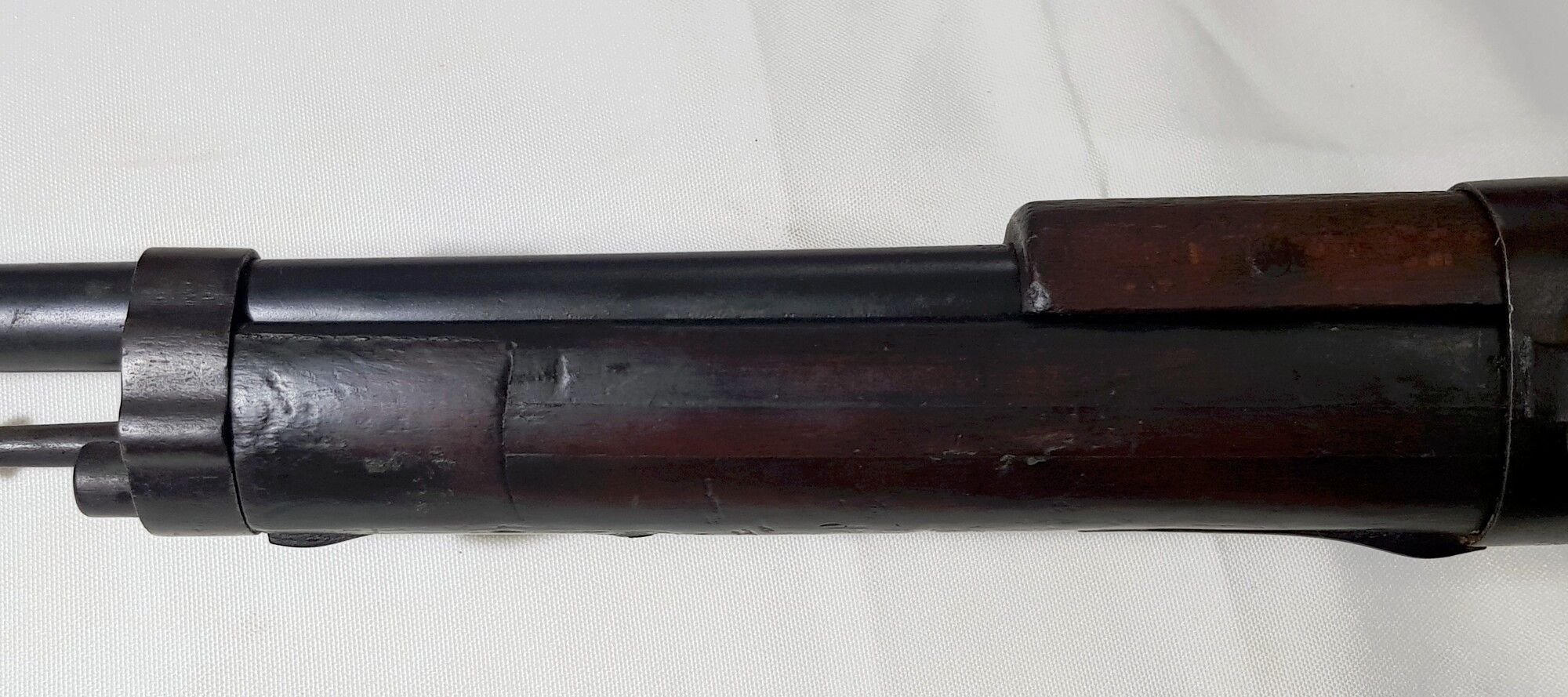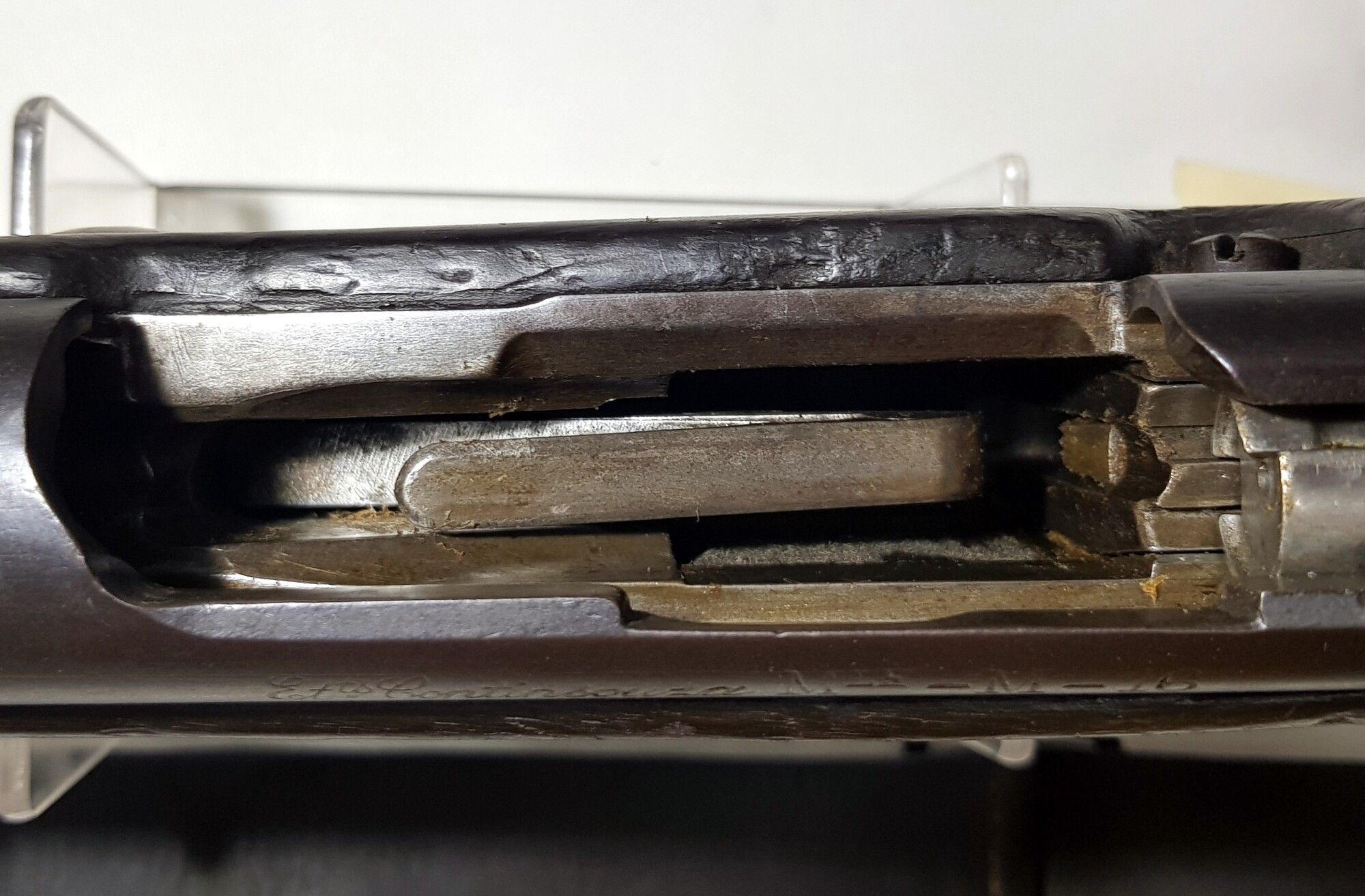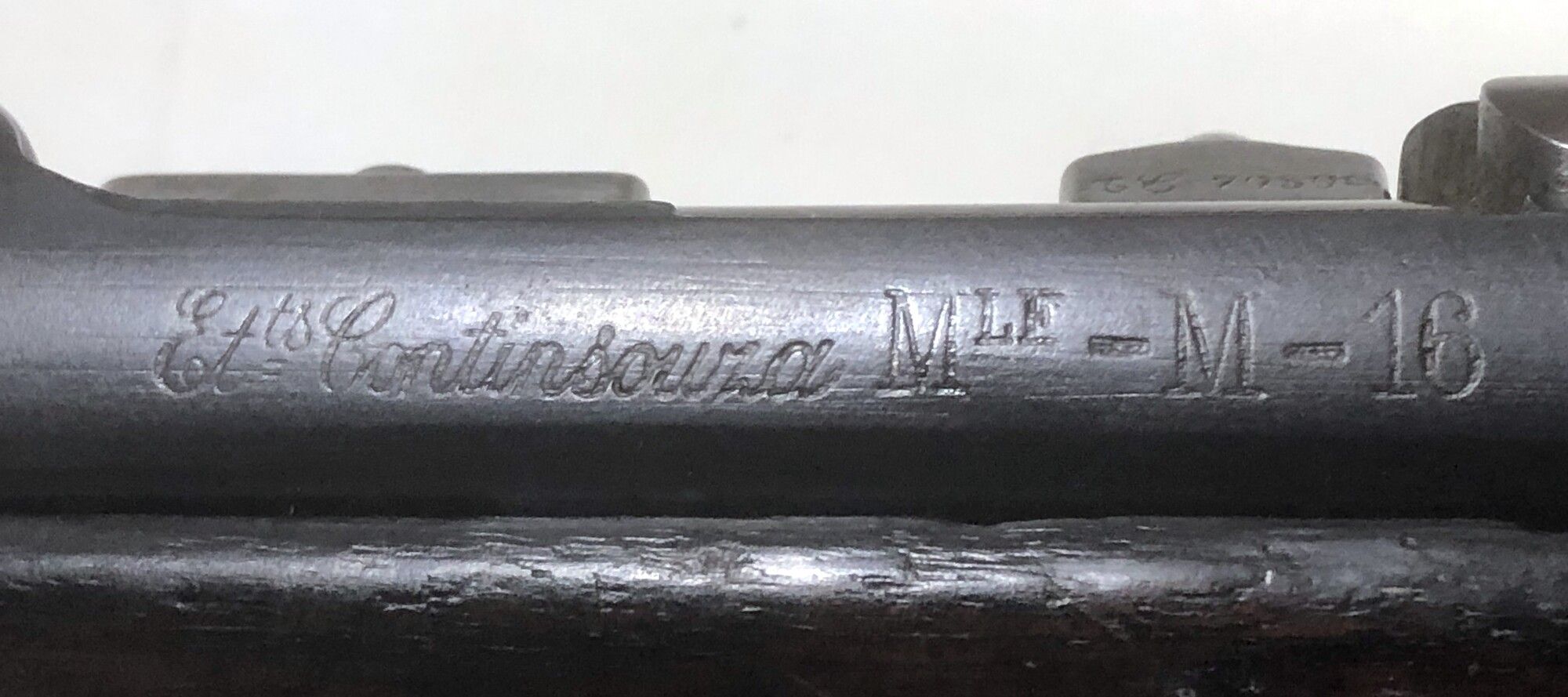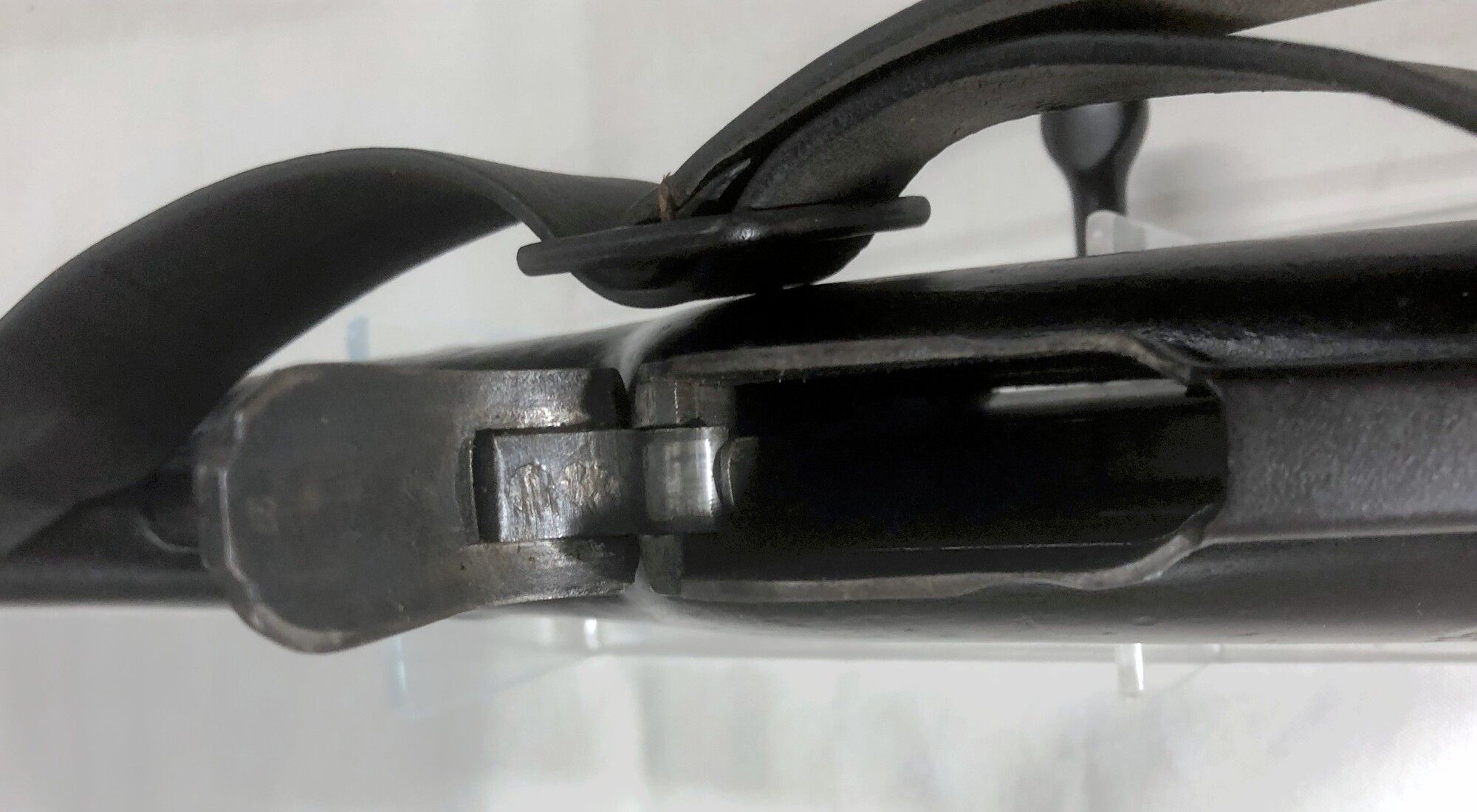Description
Named after its inventor, Emile Berthier, a French civilian engineer in the Algerian railways the Mle 1892 / M16 was an updated version of the Model 1907. At the outbreak of World War I, the Model 1907 Berthier rifle was modified for mass manufacturing, resulting in the Mdle 07/15. During World War I, it was quickly recognized that the Berthier’s three-shot magazine was simply too small in comparison to foreign weapons, requiring too-frequent reloading. Additionally, it was found that trench mud & grit could enter the weapon through the opening in the bottom of the magazine. To correct these issues, the Model 1916 Berthier rifle was introduced with a five-round en-bloc clip. The clip discharge opening at the bottom of the protruding magazine was replaced by a spring loaded trapdoor to keep out dirt and debris. This improved 5-shot design was then fitted to existing rifle & carbine-length Berthier models (Mle 1907/15, Mle 1890 M16, 1892 M16 and Mle 1916 “mousquetons” ).
Many Model 1916 rifles & carbines were produced too late to see service in World War I, but were used after the war, particularly in colonial service. Berthier rifles & carbines continued in service during the Second World War in all branches of French service, including infantry & mounted units. Colonial & Foreign Legion forces in particular continued to use the Mdle 1916 Berthier due to a shortage of the new MAS-36 bolt-action rifle. Despite the advent of the MAS-36, the French Army did not have enough of the new rifles to equip even half of its front line interior troops. Berthier Model 1916 (original & converted) 5-shot rifles & carbines saw action in both France & Norway. After the fall of France in 1940, the Berthier could be found in service with both Vichy & Free French units. In September 1938, the French Army also introduced the corps franc, special formations of infiltration & deep reconnaissance soldiers formed into l’equipe or assault teams. These elite reconnaissance & infiltration troops were equipped with a variety of small arms, including a combat knife, a handgun, grenades, & Berthier Mle 1892/M16 carbines.
The Mle 1890 M16, 1892 M16 & Mle 1916 “mousquetons” ) were again used by French Foreign Legion & some colonial infantry & cavalry units, including the French Spahis. The Greek Army still fielded Berthier Mle 07/15 M16 rifles during the Greek-Italian War, most being used in second-line units.
In World War 2 the Third Reich issued many captured Berthier carbines to German occupation forces in France, mainly to Atlantic Wall units. Some were even used by police units fighting partisans in various eastern European countries including security units operating at the rear of German front lines in Soviet Union.
Unusually, this particular rifle has ‘ETts Continsouza Mle M.16’ on the left side meaning it was made by the firm ‘Établissement Continsouza. The history of Établissement Continsouza is very interesting. Établissement Continsouza which was created in 1909 by Pierre-Victor Continsouza produced gramophones & cinematography equipment. In 1914 Monsieur Continsouza rented industrial buildings in North-East part of Tulle to produce armaments for the war effort. After the war he moved his entire production of cinematography equipment to this location. He continued operations until May of 1928 when he merged with Éstablishments Louis Aubert to form a company called Mécanique Industrial de Precision (M.I.P.) but in 1929 he was forced to liquidate his assets to the Banque Nationale de Crédit (B.N.C.) & thus the name Établissements Continsouza disappears from history. They only made was receivers during WWI & these were sent to on to a major arsenal which was normally Manufacture Nationale d’Armes de Châtellerault (MAC) where complete weapons to be put together.
As such, these are rarer & more desirable than just a MAS Mle 1916 as a Continsouza marked Mle M.16 is one of the harder to find arsenals (it ranks up there with Tulle marked examples).
Not unusually, the barrel was manufactured by Manufacture d’Armes de Saint Etienne (MAS) in 1918. The rifle comes intact with original (numbered to the rifle) one piece full length wooden stock & top hand guard with a stacking lug near the muzzle & is complete with the original brown leather sling.
It has matching barrel, receiver, trigger guard, bolt & stock. The stock shows an arsenal repair & it has had the cleaning rod channel filled as was normal when they were updated for the larger 5 round magazine capacity.
We have had this apart & when undressed it is in very good condition as can be seen in the photos.
This rare rifle could complete your French battle rifle collection for not much money.
Please view all of the photos carefully as they form the main description & override all others so feel free to ask for more as we have taken plenty.


